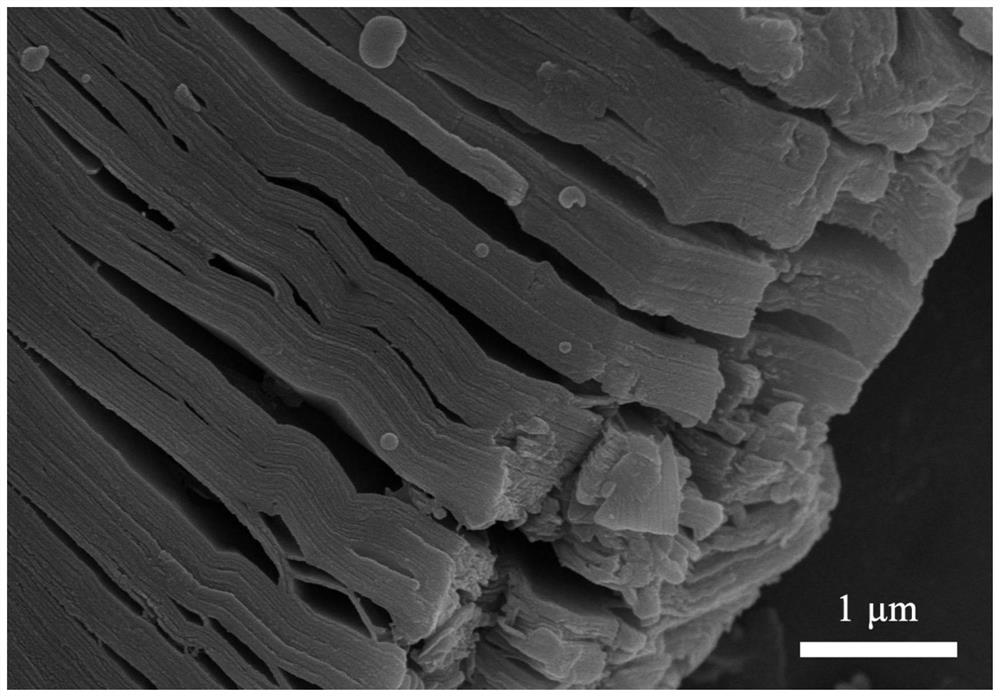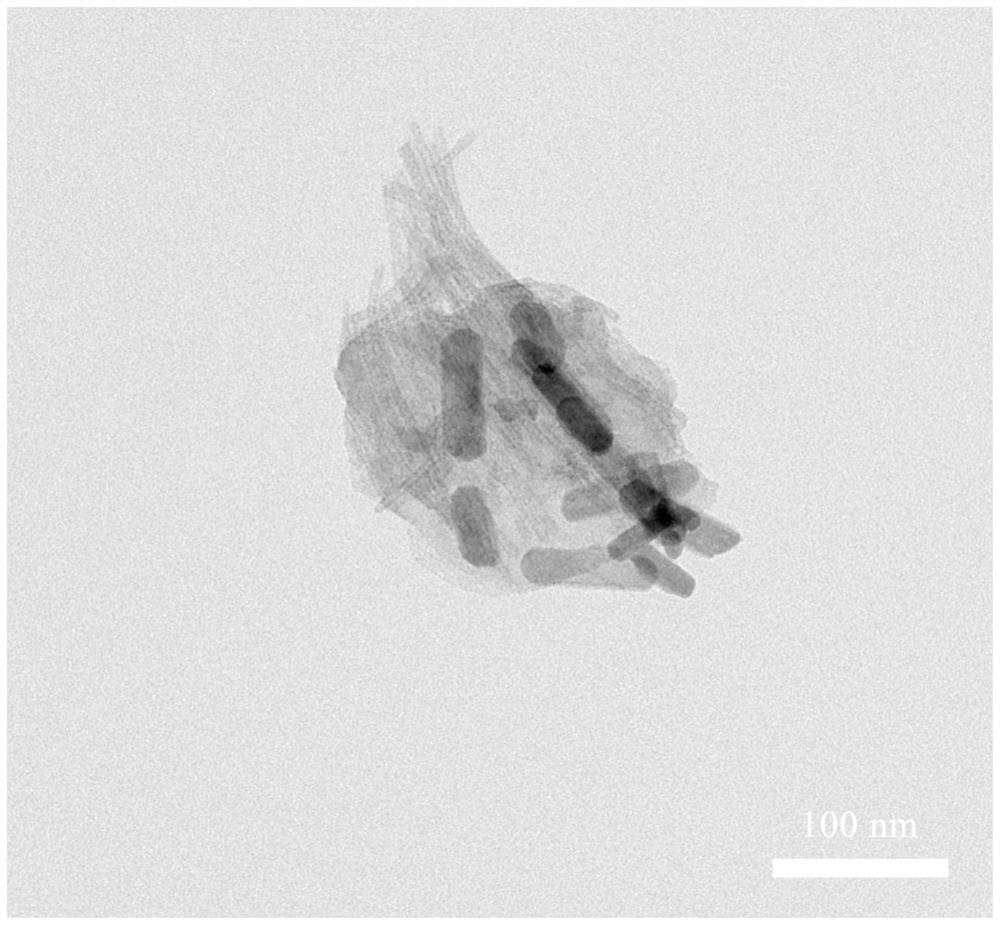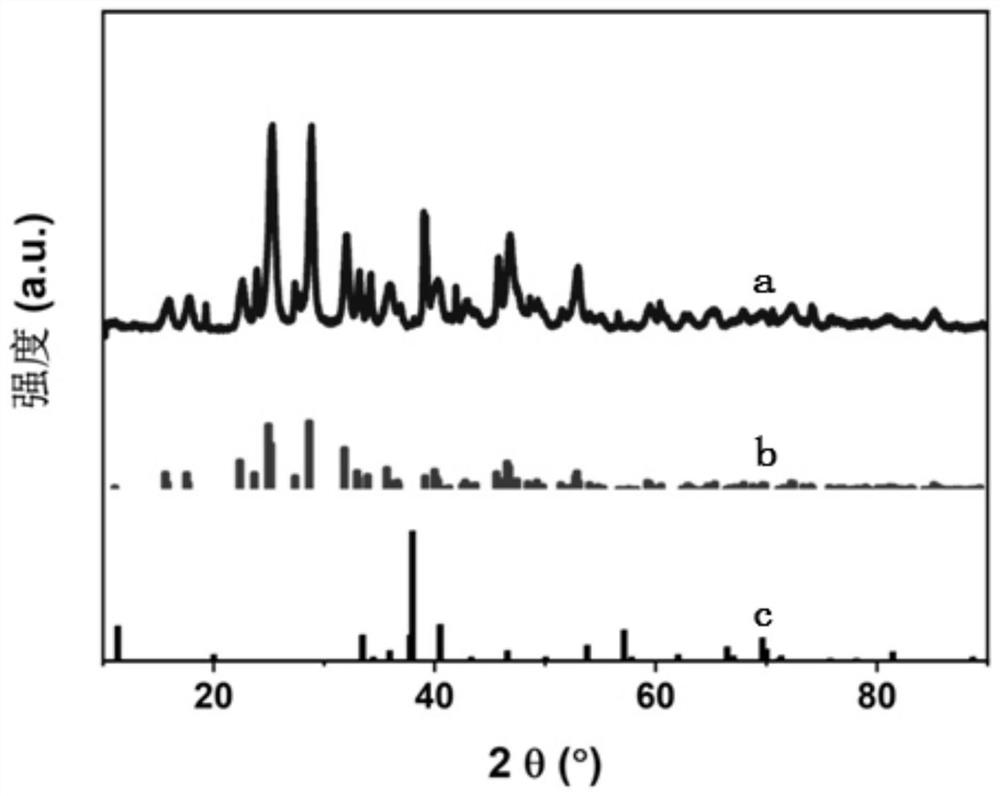Preparation method and application of titanium tricarbide-bismuth sulfide nano composite material
A nanocomposite material, bismuth sulfide technology, applied in the field of tumor near-infrared light therapy, can solve the problems of low sensitivity and specificity, lack of targeting, etc., to prolong separation time, increase ROS generation, and good biocompatibility and targeted effects
- Summary
- Abstract
- Description
- Claims
- Application Information
AI Technical Summary
Problems solved by technology
Method used
Image
Examples
specific Embodiment approach 1
[0018] Specific embodiment one: the preparation method of titanium three carbon two-bismuth sulfide nanocomposite of the present embodiment, carry out according to the following steps:
[0019] Firstly, the titanium trialuminum carbon 2 is etched, and after the etching treatment, the stripping treatment is carried out; then, the oil-soluble titanium trialuminum carbon di-bismuth sulfide nanocomposite is prepared by hydrothermal synthesis reaction using the stripped titanium trialuminum carbon 2 as the substrate. materials, and then transform the oil-soluble titanium three carbon two-bismuth sulfide nanocomposites into water-soluble titanium three carbon two-bismuth sulfide nanocomposites, and finally the water-soluble titanium three carbon two-bismuth sulfide nanocomposites are subjected to mPEG-2K -NH 2 Coating and TPP modification to obtain titanium three carbon two - bismuth sulfide nanocomposite material.
specific Embodiment approach 2
[0020] Specific embodiment two: the difference between this embodiment and specific embodiment one is: the specific steps of etching titanium three aluminum carbon two are as follows: adding titanium three aluminum carbon two powder in the HCl-LiF mixed solution, at 35 ~ Stir magnetically for 48-72 hours at a temperature of 38°C, then repeatedly centrifuge and wash with deionized water and absolute ethanol until the pH is 6-7, and obtain the etched titanium trialuminum carbon two, the quality of the titanium three aluminum carbon two powders and The volume ratio of the HCl-LiF mixed solution was 1 g:5 mL, the concentration of HCl in the HCl-LiF mixed solution was 9 mol / L, and the concentration of LiF was 100 g / L.
[0021] Other steps are the same as in the first embodiment.
specific Embodiment approach 3
[0022] Specific embodiment three: the difference between this embodiment and specific embodiment one or two is: the specific steps of stripping the etched titanium trialuminum carbon two are as follows: put the etched titanium trialuminum carbon two into tetrapropylene In the base ammonium hydroxide solution, stir magnetically at room temperature (23-25°C) for 48-72 hours to obtain the stripped titanium trialuminum carbon two, the quality of the etched titanium trialuminum carbon two and tetrapropyl ammonium hydroxide The volume ratio of the solution is 1 g: 5 mL.
[0023] Other steps are the same as those in Embodiment 1 or 2.
[0024] In Embodiments 2 and 3, Ti3Al2C2 is etched and stripped to obtain Ti3C2 nanosheets, which enhances its electrical conductivity and prolongs the electron-hole ratio of nanocomposites under near-infrared light irradiation. separation time.
PUM
| Property | Measurement | Unit |
|---|---|---|
| thickness | aaaaa | aaaaa |
| particle size (mesh) | aaaaa | aaaaa |
| energy | aaaaa | aaaaa |
Abstract
Description
Claims
Application Information
 Login to View More
Login to View More - Generate Ideas
- Intellectual Property
- Life Sciences
- Materials
- Tech Scout
- Unparalleled Data Quality
- Higher Quality Content
- 60% Fewer Hallucinations
Browse by: Latest US Patents, China's latest patents, Technical Efficacy Thesaurus, Application Domain, Technology Topic, Popular Technical Reports.
© 2025 PatSnap. All rights reserved.Legal|Privacy policy|Modern Slavery Act Transparency Statement|Sitemap|About US| Contact US: help@patsnap.com



